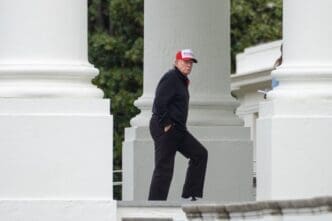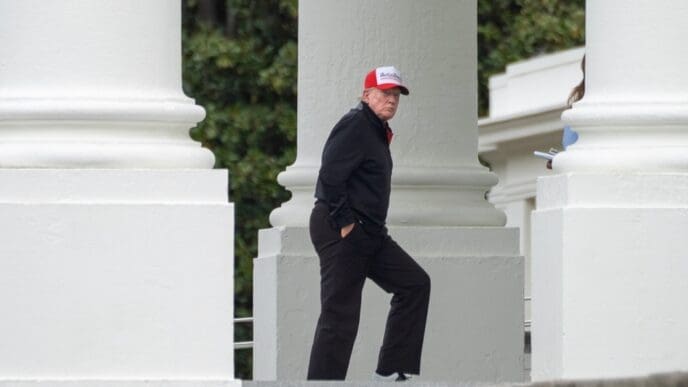Stores specializing in secondhand clothes, shoes, and accessories are expected to benefit from President Donald Trump’s trade war, according to industry experts. As businesses worldwide strive to mitigate potential repercussions, these stores may see a surge in popularity. Although American fashion exerts a significant international influence, nearly all clothing sold domestically is produced overseas. A recent estimate from a university budget lab indicated short-term consumer price increases of 65% for clothes and 87% for leather goods, emphasizing that U.S. tariffs disproportionately impact these goods.
The rise in prices is likely to push budget-conscious shoppers towards online resale sites, consignment boutiques, and thrift stores as they search for economical alternatives or ways to monetize their wardrobes. Used items tend to cost less than new ones and would only face tariffs if imported from abroad. Resale is anticipated to thrive in a contracting market, with channels offering value set to succeed in this tumultuous environment.
However, the future of preowned fashion remains uncertain, as it depends on whether tariffs persist long enough to affect consumer behavior significantly. It is also unclear if secondhand retailers might raise their prices, aligning with market trends or responding to increased demand. The potential for increased interest in secondhand options is evident as some consumers consider alternative avenues in response to elevated retail prices.
Prior to the tariff concerns, the secondhand clothing market was already experiencing significant growth. Management consulting firms have predicted that global revenue from preowned fashion would outpace retail apparel sales as consumers seek cost-saving or more environmentally conscious options. While millennials and Generation Z are the primary demographic for used clothing, data suggests an expanding audience.
The number of mobile app downloads for various resale marketplaces has increased, marking the first quarterly gain in three years. Downloads of apps for platforms such as eBay, Depop, ThredUp, and The RealReal surged, coinciding with the announcement of punitive tariffs on multiple countries. Shoppers who once sought unique vintage pieces are now increasingly turning to secondhand sites for regular fashion items, as these remain cheaper alternatives despite retailer discounts.
Digital platforms like Poshmark, where users buy and sell preowned clothing, are poised to capitalize on the current environment. Companies running e-commerce marketplaces are upgrading their technology to enhance user experience, which may yield long-term benefits amid market disruptions from tariffs. Technology firms are also witnessing increased interest from clothing brands in collaborating to tap into existing U.S. inventory, either in consumer closets or unused warehouses.
Off-price retailers such as TJ Maxx and Burlington Stores may navigate tariffs more effectively than traditional apparel chains and department stores due to their stock of leftover U.S. merchandise. Nonetheless, the resale market is not entirely immune to tariff-related challenges. U.S. sellers importing secondhand inventory from European countries could face a 20% duty if “reciprocal” tariffs are imposed and import tax exceptions are revoked.
A coalition advocating for circular fashion is seeking a tariff exemption for used and recycled goods intended for resale. The removal of duty-free provisions for low-value parcels from China could favor secondhand clothing sellers by making low-priced Chinese fashions more expensive. Online consignment platforms like ThredUp anticipate benefiting from tariff changes but question whether resale channels will significantly alter individual brand operations.
Marketplaces like Rebag, which sells used designer handbags, expect tariffs to attract new customers and plan to expand their physical store presence. The company intends to adjust its pricing for luxury goods in response to market trends, acknowledging that consumers are increasingly priced out of new items.
As some consumers like Norah Brotman, a university senior, continue to favor secondhand purchases, the evolving economic landscape might discourage fast fashion and promote more mindful consumption. A shift in consumer behavior could ultimately steer people towards more sustainable fashion choices.











